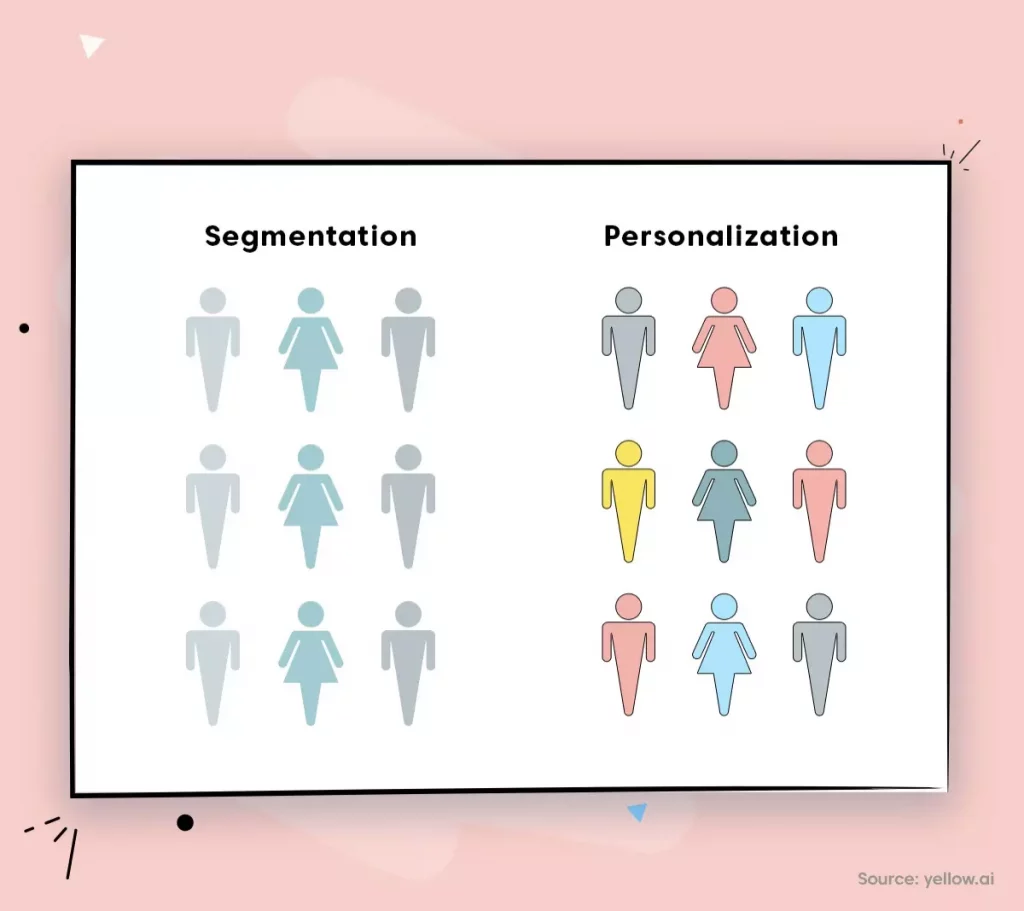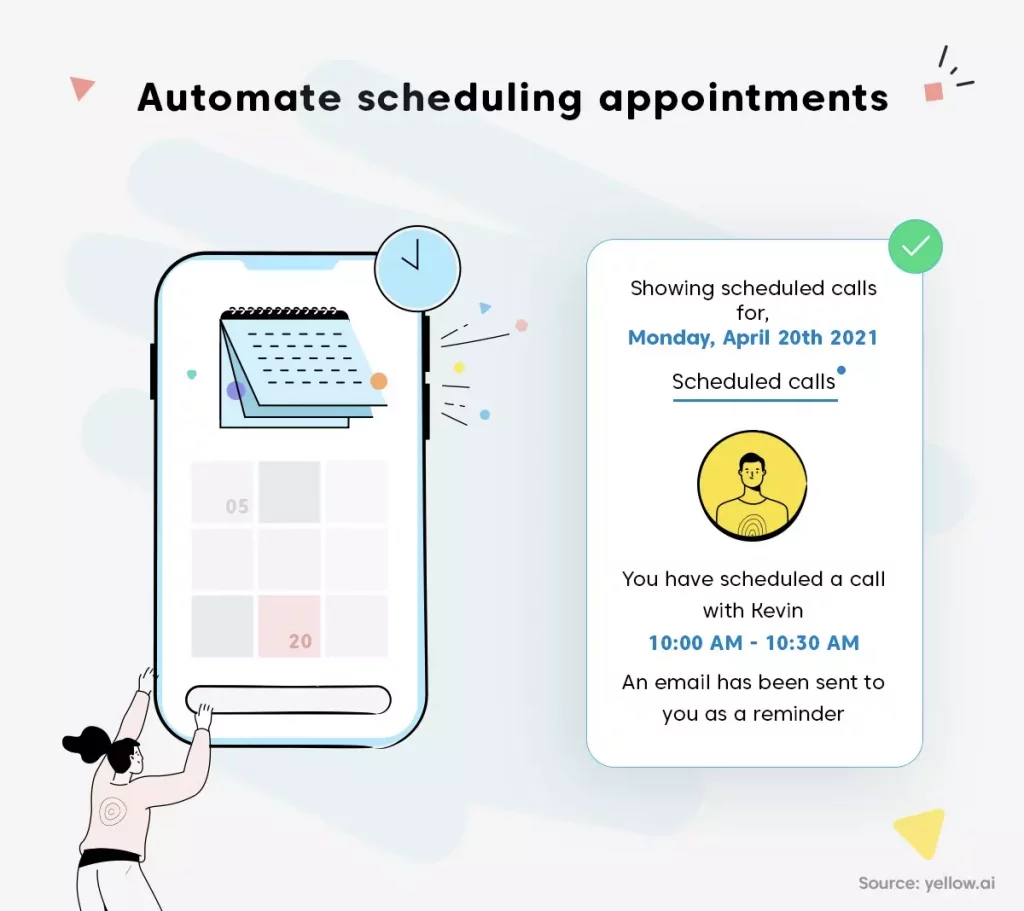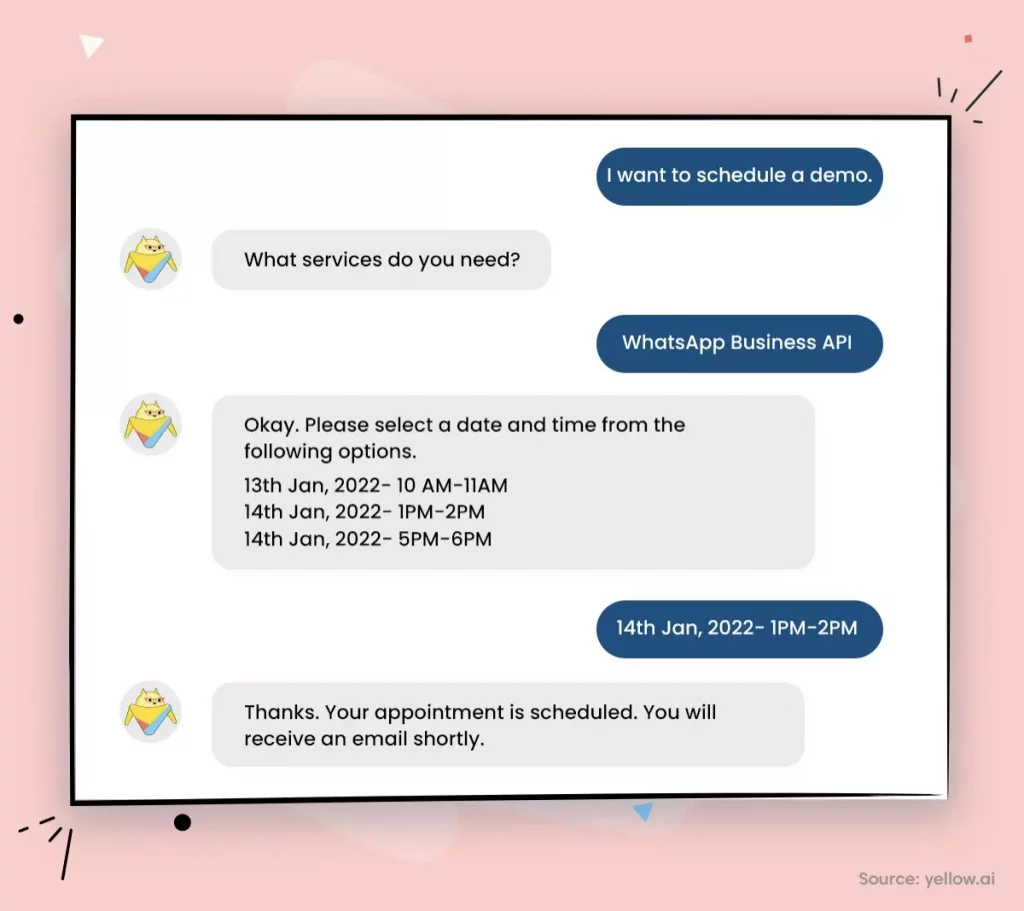Generating and capturing interest in a product or service, or what’s also known as lead generation, will always be the ultimate objective for modern sales and marketing teams. But when you’re running a digital-first organization, the bulk of your processes, including lead generation, occur primarily on digital channels, across multiple platforms, time zones and teams.
This means conventional lead generation practices won’t cut it. In response to this pressure, early DNBs (digitally native brands) turned to chatbots as the preferred solution for lead generation and nurturing. However, chatbots have historically struggled to provide top-class support and experience that brands and customers expect. Why? Here are three big reasons.
Limited functionality
Most chatbot solutions are designed to answer basic questions, with each response based on a script. Because their responses are limited, chatbots are unable to answer complex, multipart queries that require deeper understanding and decision-making. For customers seeking support, chatbots are merely frontline tools that often don’t deliver resolution. Thus, they are forced to go through more steps to get the answers they need to move forward and make a decision.
Lack of human interaction
According to PwC, 64% of US consumers feel that brands fail to deliver that human element in the customer experience. In a different study, 65% of customers still prefer talking to human supportover chatbots. It’s clear that human interaction remains a premium driver for most customers, mainly because human connection translates to empathy. Empathy from brands shows customers that they are valued and loved. Chatbots are not capable of understanding the nuances of human conversation and emotions. This means chatbot platforms can’t engage customers in a deeper level where empathy plays a crucial role to customer experience and satisfaction.
Inability to personalize
Modern customers expect brands to deliver personalized service at any contact point and throughout their journey. Chatbots are limited to scripts and simple decision trees, thus customers are provided with generic responses. Companies that excel at personalization enjoy 40% more revenue than those that don’t. As chatbots serve at the first line of customer interaction, their inability to deliver personalized experiences can lead to poor customer experience and substantial loss of revenue.
Conversational AI: Filling the gaps
Today’s consumers have elevated expectations when it comes to digital interactions with brands. Conversational AI has moved front and center and is increasingly a must-have technology for DNBs. That’s because 69% of DNBs have fully mature AI capabilities. In a tough competitive landscape, AI maturity is what separates high-growth DNBs from the digital laggards.
Conversational AI combines artificial intelligence, speech-based technology, NLP (natural language processing) and ML (machine learning) to initiate and facilitate stronger interactions and drive greater engagement at scale across users and platforms. It’s no wonder that DNBs are shifting from limited, simple chatbots to robust conversational platforms to power their lead generation.
Why should DNBs use conversational AI for lead generation?
It’s simple: because conversational AI is the most effective tool there is.
Successful communication is the key to any growing business. Clearly, a company that communicates effectively during the initial interaction with a potential customer typically wins the game. Deploying conversational AI at the frontline gives digital native brands the opportunity to build a positive perspective in customers’ minds from the get-go.
Conversational AI agents can engage and interact with customers at any time of the day, thanks to their 24/7 availability. These solutions deliver powerful customer engagement across a plethora of channels, devices and platforms, providing digital native consumers convenient options while delivering seamless and consistent experiences.
More than half (55%) of businesses that use conversational AI for lead generation have generated more high-quality leads. DNBs typically have smaller human support teams and are prone to missing leads during interactions and engagements with customers. Conversational AI agents, on the other hand, are unrivaled when it comes to connecting and engaging with prospects. Humans may miss a lead opportunity, but conversational AI agents cannot.
There are a number of reasons to use conversational AI technology, and all of them revolve around one thing: effective communication. Specifically, in terms of lead generation, businesses should use conversational AI because it brings:
1. Qualifying leads
Dynamic AI agents can speed up the process of qualifying leads and filter them with minimal to zero human involvement. Automation can help to qualify leads before letting them into the sales funnel. By setting up a specified set of questions as a gateway, businesses can get only qualified leads.
Also, conversational AI agents fully automate communication for the complete sales cycle, from awareness to delight. They can assist customers through prompts throughout their journey, no matter how short or long. Marketers and sales reps also benefit from this automation as AI agents streamline the interactions by automatically scheduling meetings with qualified leads and instantly pushing them down the sales funnel.
2. Better ROI
By automating conversations and facilitating the customer’s journey, conversational AI agents can increase ROI substantially. These smart agents, when utilized to their fullest potential, can create a flood of qualified leads.
And conversational AI platforms are extremely scalable. More than 80% of enterprises reported enhanced call volume processing after deploying conversational AI agents. DNBs don’t have to worry about capacity or bandwidth.

3. Better customer engagement
Conversational AI enables digital native brands to deliver powerful customer engagement. With constant, contextual and omnichannel communication, DNBs amaze their customers. Such customer engagement is very rare and equally important.
With most advanced conversational AI solutions integrated with ML and NLP capabilities, AI agents are now capable of understanding meaning and intent, making the experience for customers more efficient, highly enjoyable and increasingly engaging.
How should DNBs use conversational AI for lead generation?
Traditionally, acquiring leads is 10 times more expensive than converting the leads that you already have. Using conversational AI for lead generation can significantly reduce the cost and effort that goes behind attracting customers to the top of the funnel.
Let us illustrate the use cases of conversational AI for lead generation and how businesses should go about integrating them into their strategy.
1. Understand and create user personas
The foremost factor while strategizing for lead generation is understanding your target audience and identifying user personas based on demographics, interests, geography, occupation and other factors. Using this information, a dynamic AI agent can better qualify leads.
Automating conversations for surveying customers using a set of questions can help DNBs nurture only the high-quality leads with the best chance of converting. During the interaction, the conversational AI agents analyze all touchpoints to derive meaning and intent and segment them based on the company’s products and services.
2. Segmentation and personalization
Once you have qualified leads at your disposal, it’s time to segment the list of potential customers. This task can also be automated using conversational AI.
Using segmentation along with conversational AI agents, companies can personalize their marketing messages to their customers’ mindsets.
For example, if a customer is Jewish and wants to buy a Hanukkah candle holder, segmentation will make the dynamic AI agent understand that the company is not supposed to upsell its famous decorated Christmas tree to this customer.
A personalized list of Hanukkah preparations can be promoted instead. Customers feel loved with such personalization and stay with the brand longer.

3. Simplify the process of collecting user details
Most users feel that filling out a form is tedious and usually try to opt-out. Conversational AI simplifies the process and enables customers to share their details without much effort.
Predefining a set of questions that you need from a prospect and automating them with the help of a conversational AI agent can help you convert more visitors into leads.
4. Automate scheduling appointments
Converting warm leads into potential customers is the basic functionality in sales. Once leads are qualified, the conversational AI agent can schedule appointments instantly and automatically. This feature gives companies an edge over their competitors by giving customers a zero-effort process of conversion.
By pushing the leads forward, conversational AI agents also help the sales team by doing the mundane tasks of scheduling appointments at the customers’ convenience. This also helps reduce sales churn, as reps can dedicate more time to having meaningful conversations.

5. Pushing relevant content and educating the audience
The aim of content marketing is to provide relevant content to future customers exactly when they need it. There’s no better time to engage with potential buyers as they are looking for information on your products or services.
Based on the queries of prospects, conversational AI must be able to share relevant product knowledge with the customers. Educating customers naturally pushes them further along the sales funnel and validates your services in their minds.
Also, it is a great way to market your content and ask customers to share the knowledge once they like it.
6. Seamless agent handoffs
In case of complex queries in regards to products or services, leads can easily get in touch with human personnel.
The use of conversational AI for lead generation won’t replace humans. It just streamlines tasks for employees and helps them increase their productivity. Tasks that require human empathy and do not come under the training data provided to the AI agents need human attention.
A seamless transition takes place between the human agent and the AI agent. It provides all the data and information about the history of the customer. Also, it provides the human agent with the data and information regarding the interactions so that the human agent knows everything that has been going on.
7. Generate leads even when you’re offline
Conversational AI agents are never offline. Once installed, they are at work forever.
On a public holiday, or at an odd timing, conversational AI agents can attend to prospects 24/7. This feature builds long-lasting trust and relationships with the prospects. Customers can trust you because you are always available and at service.

8. Reduce bounce rate
Prevent potential buyers from quickly leaving your website. Using conversational AI and engaging with customers during their time on your site can help reduce bounce rates.
Conversational AI improves lead generation and increases conversion rates up to 25%. Businesses that are using conversational AI for lead generation today are starting to see a competitive advantage.
Bolster lead generation for DNBs with Yellow.ai
Conversational AI is a pivotal, disruptive and next-gen technology that’s already making an impact across different business industries. Yellow.ai provides digital brands the AI platform they need to automate lead generation and drive conversations, and ultimately, accelerate customer journey to revenue.
Yellow.ai’s dynamic AI agents automate conversations 24/7 and can scale to meet increasing volumes of requests and calls. Supporting more than 100 languages and deployable across 35-plus text and voice channels, our AI agents provide digital enterprises with the consistent and reliable omnichannel presence they need to give customers superior real-time engagement for higher returns.
Compared to traditional form fills, our AI agents collect user information through casual conversations and map prospect activity and discern customer intent accurately for future campaigns, all thanks to our proprietary NLP engine.
Dynamic AI agents can direct site visitors with intent-triggered suggestions. Users can identify the intent behind a visitor’s journey on their site and direct them to the solutions they are interested in with timely suggestions for faster conversions.
The future of lead generation and conversational AI
We can’t predict the future, but the following data proves that lead generation by conversational AI is the future, and it is already here.
1. 83% of digitally native companies believe that adopting new technologies, conversational AI included, will help spur their growth.
2. 95% of employees believe that their organizations would benefit greatly by embedding AI into their operations, including lead generation, customer support, sales and marketing.
3. 83% of business managers currently use or have plans to deploy AI and ML within the next three to five years.
4. 73% of business leaders revealed that customer service is the leading application for conversational AI, closely followed by sales and marketing.
5. 46.9% of American adults will interact with a conversational AI assistant in 2022. That number will increase to 48.2% by 2025.
With Yellow.ai, customers have multiplied their revenue and seen the difference within just two weeks of deploying conversational AI.
Are you ready to generate high-quality leads for your business?
Schedule a demo with us to learn more about our dynamic AI offerings and solutions.

















